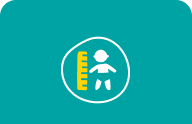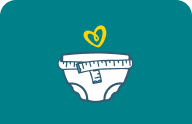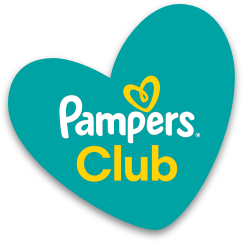Easy and Healthy Breakfast Ideas Your Toddler Will Love
Whether you’re dealing with a picky eater, a mini foodie, or someone in between, you'll appreciate these easy and healthy breakfast ideas for toddlers.
Most of these menu items are very quick to put together on busy mornings when you’re on the go and rushing to get your toddler ready for day care or preschool. Other ideas can be made ahead of time or are best prepared on a weekend morning when the entire family can sit down to breakfast together.
23 Breakfast Ideas for Toddlers
Egg Breakfast Ideas for Toddlers
Quick On-the-Go Breakfast Ideas for Toddlers


Make-Ahead Breakfast Ideas for Toddlers


Creating a Well-Balanced Diet
Your toddler's healthy growth and energy levels are fueled by a varied diet that includes foods from the five basic food groups:
Protein foods, such as meats, poultry, fish, beans, and eggs
Dairy, such as milk, cheese, and yogurt
Fruits, with fresh, frozen, and canned varieties all OK
Vegetables, including dark green, red, and orange varieties
Grains, such as cereals, bread, pasta, potatoes, and rice.
It’s okay if your toddler doesn’t eat something from each food group at every single breakfast. What's important is that your little one gets a range of wholesome foods at breakfast, lunch, dinner, and snacks, which will balance out and meet his nutritional needs over several days.
How Much Food Is Enough for a Toddler?
Your toddler's appetite is likely to change after they turn 1 year old. You’ll notice they may not need as much food as they did before. This is because their growth rate and metabolism are changing.
Your toddler needs about 1,000 calories per day, but you don’t need to count calories. Serving three nutritious meals and three healthy snacks a day is a good rule of thumb.
Keep in mind that portion sizes for a toddler tend to be smaller than those of an older child or adult. A typical toddler breakfast could be one egg or a half cup of breakfast cereal, plus a 1/3 cup of fruit and a half cup of milk.
Your toddler’s hunger can change from day to day, depending on how active they are. If he’s growing and gaining weight steadily, there’s no need to worry.
During well-child visits, your child’s growth will be compared to standard growth charts.
If your child is underweight or overweight, your healthcare provider can offer personalized advice to help get their growth back on track.
You don’t have to wait for the next checkup to ask questions or share concerns. If you’re ever worried about your toddler’s growth or eating habits, contact their healthcare provider.
A Note on Picky Eaters
As they become more independent, toddlers sometimes go through a phase of picky eating, which can make mealtime feel like a battleground. Your child might refuse to eat anything at all, or decide to eat only a certain type of food. A favorite food one week could be rejected the following week.
This behavior is normal during the toddler and preschooler years, but eventually goes away.
The best strategy is to offer your toddler a variety of healthy, tasty foods and let them choose what to eat. Keep serving foods even if they've been rejected more than once, giving them the chance to try new foods willingly instead of it being forced upon them.
Why It’s Important to Avoid Food Bribes
It’s best to avoid bribing your child with food or during mealtime, like promising dessert if they eat their peas. It's also unwise to make comparisons to other siblings, such as by saying, “See, your big sister eats her veggies!”
This added pressure can lead to eating problems in the future. Instead, keep mealtimes pleasant and relaxed, a chance for your child to learn good eating habits and to be sociable with the rest of the family.
Toddler Food Watchouts
Although your toddler will likely be eating most of the same foods as the rest of the family, there are a few precautions to keep in mind:
Make sure the food is not too hot and doesn’t burn his mouth. Taste a little to test the temperature before letting them eat.
Avoid foods that have a lot of spices, butter, salt, or sugar. Your toddler’s palate may still be too sensitive to these very strong flavors, and too much added salt and sugar may affect your little one’s long-term health.
Your toddler doesn’t learn to chew with a grinding motion until their about 4. This means you should avoid giving them food that may become a choking hazard. Here are some general tips on how to do this:
Mash or cut foods into small, easy-to-chew pieces
Spherical items like grapes and cherry tomatoes should be cut into halves or quarters
Cylindrical items like hot dogs and carrots need to be quartered lengthwise and then cut into pieces
Spread a thin layer of peanut butter onto bread or crackers — don’t offer a chunk or spoonful of it
Avoid whole nuts, seeds, popcorn, hard candies, jelly beans, and gummy bears — all of these can be easy to choke on if swallowed whole or in large chunks.
Food Allergies, Intolerances, and Sensitivities
Around the time your toddler is trying new foods for the first time, it’s important to keep an eye out for any allergic reaction that they may have to certain foods.If your toddler has a food allergy, it would most likely be due to a food item on this list:
Cow’s milk
Wheat
Soy
Peanuts
Tree nuts, such as almonds, walnuts, pistachios, pecans, and cashews
Fish, such as tuna, salmon, or cod
Shellfish, such as shrimp, lobster, or clams
If your toddler is allergic, you may see the following allergic reactions:
Skin problems such as skin rashes or swelling
Breathing problems such as sneezing, wheezing, or tightness in the throat
Stomach symptoms such as nausea, vomiting, or diarrhea
Circulation symptoms such as pale skin, light-headedness, or loss of consciousness.
If your toddler loses consciousness or experiences multiple symptoms, seek immediate medical attention.
Sometimes your child may not be allergic to a type of food but may instead have an intolerance or sensitivity:
Lactose intolerance. Your toddler can’t digest dairy products properly and may complain of a stomach ache, look bloated, and/or have diarrhea.
Food sensitivity. Your toddler could be sensitive to food dyes, additives, or preservatives in store-bought foods and may show signs of asthma.
Here's some good news: kids usually outgrow allergies to egg, milk, wheat, and soy. Most little ones leave these food allergies behind by age 5. But allergies to peanuts, tree nuts, and seafood might stick around a bit longer.
If you think your child might have a food allergy or sensitivity, it's a good idea to chat with your doctor. They can run some tests to figure things out and guide you on adjusting your child's diet and handling any allergic reactions.
The Bottom Line
Whether you love cooking or prefer to keep things simple, breakfast is a great time to get creative—or stay practical. Try prepping meals in advance to make mornings easier, and keep things interesting with a mix of options like eggs, oatmeal, smoothies, or toast with cheese or peanut butter. On weekends, go for something fun like blueberry pancakes or banana muffins—your toddler can even help out!
Want more ideas like these? Download the Pampers Rewards App for tips, tools, and rewards made just for parents like you!
How We Wrote This Article The information in this article is based on the expert advice found in trusted medical and government sources, such as the American Academy of Pediatrics and the American College of Obstetricians and Gynecologists. You can find a full list of sources used for this article below. The content on this page should not replace professional medical advice. Always consult medical professionals for full diagnosis and treatment.
Read more about Toddler
Join a World of Support
through Pregnancy and Parenthood.
TRACK WITH TOOLS
LEARN WITH EXPERTS
GET REWARDED












